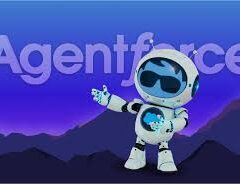How AI Agents and Open APIs Are Unlocking New Rebundling Opportunities
While much of the 2023-24 excitement surrounding AI has focused on the capabilities of foundational models, the true potential of AI lies in reconfiguring value creation across vertical value chains, not just generating average marketing content.
The Vertical AI Opportunity
Most AI hype has centered on horizontal B2C applications, but the real transformative power of AI is in vertical B2B industries. This article delves into the opportunities within vertical AI and explores how companies can excel in this emerging space.
Short-Term and Long-Term Strategies in Vertical AI
In the short term, many vertical AI players focus on developing proprietary, fine-tuned models and user experiences to gain a competitive advantage. These niche models, trained on domain-specific data, often outperform larger foundational models in latency, accuracy, and cost. As models become more fine-tuned, changes in user experience (UX) must integrate these benefits into daily workflows, creating a flywheel effect.
Vertical AI companies tend to operate as full-stack providers, integrating interfaces, proprietary models, and proprietary data. This level of integration enhances their defensibility because owning the user interface allows them to continually collect and refine data, improving the model. While this approach is effective in the short term, vertical AI players must consider the broader ecosystem to ensure long-term success.
The Shift from Vertical to Horizontal
Though vertical AI solutions may dominate in specific niches, long-term success requires moving beyond isolated verticals. Users ultimately prefer unified experiences that minimize switching between multiple platforms. To stay competitive in the long run, vertical AI players will need to evolve into horizontal solutions that integrate across broader ecosystems.
Vertical Strategies and AI-Driven Rebundling
Looking at the success of vertical SaaS over the last decade provides insight into the future of vertical AI. Companies like Square, Toast, and ServiceTitan have grown by first gaining adoption in a focused use case, then rapidly expanding by rebundling adjacent capabilities.
This “rebundling” process—consolidating multiple unbundled capabilities into a comprehensive, customer-centric offering—helps vertical players establish themselves as the hub. The same principle applies to vertical AI, where the end game involves going vertical to later expand horizontally.
AI’s Role in Rebundling
The key to long-term competitive advantage in vertical AI lies not just in addressing a single pain point but in using AI agents to rebundle workflows. AI agents serve as a new hub for rebundling, enabling vertical AI players to integrate and coordinate diverse workflows across their solutions.
Rebundling Workflows with AI
Business workflows are often fragmented, spread across siloed software systems. Managers currently bundle these workflows together to meet business goals by coordinating across silos. But with advances in technology, B2B workflows are being transformed by increasing interoperability and the rise of AI agents.
- Increasing Interoperability: More business capabilities are now accessible via APIs, allowing different workflows to be integrated and new opportunities for innovation to emerge.
- The Rise of AI Agents: AI agents solve the goal-seeking problem by scanning available resources, planning, breaking down goals into tasks, and executing those plans. This allows AI agents to rebundle workflows across APIs, creating new performance possibilities.
The Rebundling Power of AI Agents
Unlike traditional software that automates specific tasks, AI agents focus on achieving broader goals. This enables them to take over the goal-seeking functions traditionally managed by humans, effectively unbundling goals from specific roles and establishing a new locus for rebundling.
Vertical AI Players: Winners and Losers
The effectiveness of vertical AI players will depend on the sophistication of their AI agents and the level of interoperability with third-party resources. Industries that offer high interoperability and sophisticated AI agents present the most significant opportunities for value creation.
- The Incumbent SaaS Advantage: Established players like Toast, Shopify, and Salesforce already hold hub positions due to their robust API ecosystems. These incumbents are well-positioned to further solidify their dominance by integrating AI agents into their platforms.
- The Vertical AI Upstart Advantage: Startups may find opportunities in industries that have resisted interoperability. A superior AI agent can attract customers and encourage other players to open their APIs, positioning the startup as a new hub.
The End Game: From Vertical to Horizontal
Ultimately, the goal for vertical AI players is to leverage their vertical advantage to develop a horizontal hub position. By using AI agents to rebundle workflows and integrate adjacent capabilities, vertical AI companies can transition from niche providers to central players in the broader ecosystem. This path—going vertical first to then expand horizontally—will define the winners in the AI-driven future of business transformation.













